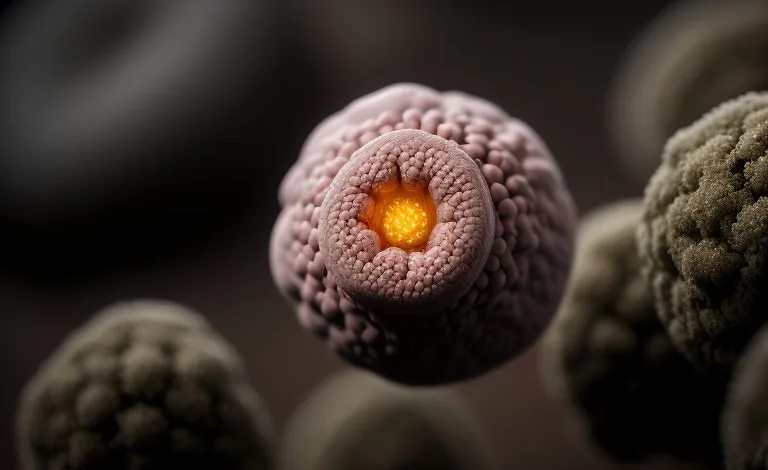
The Power of Neoplasm: Tumor Growth Explained
Neoplasm, or tumor growth, has long been suggested to underlie a number of medical conditions. While many of these conditions have found treatments, neoplasms remain one of the most mysterious and least understood aspects of human biology. Researchers are still working to uncover the intricate mechanisms behind the growth of malignant tumors, in order to develop advanced ways to treat them.
What Is Neoplasm?
Neoplasm is a general term for abnormal or uncontrolled cell growth. This growth can be either malignant or benign, depending on the nature of the cells. Neoplasms are most commonly found in the form of tumors that can be found in different parts of the body, from the brain and if uncontrolled, can be life threatening.

How Does Neoplasm Work?
Neoplasms are caused by changes in the genetic material of the affected cells. These changes in the cells’ DNA can cause them to grow in an uncontrolled manner and result in tumor formation. In many cases, the cause of the genetic changes is unknown, which makes neoplasms difficult to treat.

Most tumors are made up of a combination of several different types of cells. The different types of cells can vary in their growth rate, which leads to tumors that are heterogeneous in their composition. This heterogeneity results in some tumors having different responses to treatment than others, creating a challenge for oncologists.
How We Can Unlock Neoplastic Secrets?
In order to better understand and treat neoplasms, researchers have been studying them for years. There are several different approaches that can help in the understanding of how neoplasms develop and how they can be treated.

The most important of these approaches is researching the genetic changes that lead to tumor growth. Understanding the exact genetic changes that cause neoplasms is critical for developing treatments for them. By mapping the entire functional human genome, researchers are getting closer to understanding the genetic changes that lead to tumor formation.
In addition to looking at genetic changes, scientists are also studying the effects of environmental and lifestyle factors on neoplasms. Many neoplasms are linked to outside influences, such as exposure to certain toxins, dietary choices, and even stress. Being able to identify which environmental and lifestyle factors can increase the risk of developing neoplasms can help to create better strategies for prevention and treatment.
What Are Some Treatments for Neoplasms?
The treatments for neoplasms vary depending on the type of tumor. The most common treatments are chemotherapy and radiation therapy, but other forms of treatment may also be used depending on the situation.
Surgery is often used to remove tumors, depending on their size and location. In cases where the tumor has spread too far to be removed surgically, other treatments, such as immunotherapy and targeted therapy, can be used to slow down or stop the growth of the tumor.

The Future of Neoplasm Treatments: A Promising Outlook
Neoplasms, abnormal cell growths, can be benign or malignant, and their impact on human health is significant. Malignant neoplasms, also known as cancer, are a leading cause of death worldwide. For decades, researchers have been working tirelessly to unlock the secrets of neoplasm growth and develop effective treatments. Although research into the underlying causes of neoplasms is ongoing, current treatments for neoplasms are relatively successful. In this article, we will explore the future of neoplasm treatments and how advances in technology and research are paving the way for more successful treatments.
Current Treatments for Neoplasms
Surgery, radiation therapy, chemotherapy, hormone therapy, and immunotherapy are some of the current treatments for neoplasms. These treatments aim to remove or destroy the abnormal cells, prevent further growth, and minimize the risk of recurrence. The choice of treatment depends on the type, stage, and location of the neoplasm, as well as the patient's overall health.
While these treatments have been effective in many cases, they are not without their drawbacks. Surgery can be invasive, radiation therapy can cause damage to surrounding tissues, and chemotherapy can have severe side effects. Moreover, some neoplasms are resistant to current treatments, and recurrence is not uncommon.
Emerging Treatments for Neoplasms
Researchers are working on developing less invasive and more targeted forms of treatment, such as gene therapy. Gene therapy involves introducing genes into cells to correct genetic defects or to restore normal cellular function. This approach has shown promise in treating genetic disorders and some types of cancer.
Another area of research is immunotherapy, which harnesses the body's immune system to fight cancer. Immunotherapy can help the immune system recognize and attack cancer cells more effectively. Researchers are also exploring ways to combine different treatments, such as chemotherapy and immunotherapy, to enhance their effectiveness.
The Role of Technology in Neoplasm Treatments
Advances in technology are crucial in the development of new treatments for neoplasms. For instance, advances in genomics have enabled researchers to better understand the genetic changes that occur in neoplasms. This knowledge has allowed for the development of targeted therapies that can specifically target cancer cells.
In addition, advances in imaging technology, such as magnetic resonance imaging (MRI) and positron emission tomography (PET), have improved the accuracy of diagnoses and enabled researchers to monitor treatment responses more effectively.
The Future of Neoplasm Treatments
The future of neoplasm treatments looks promising. As researchers continue to unlock the secrets of neoplasm growth, more effective treatments will be developed. The development of targeted therapies and immunotherapies holds great promise for the treatment of neoplasms.
Moreover, gene editing technologies, such as CRISPR, have the potential to revolutionize neoplasm treatments. Gene editing technologies enable researchers to modify genes with unprecedented precision, which can help to correct genetic defects that drive neoplasm growth.
Neoplasms are a serious medical condition that can have life-threatening consequences. Although current treatments are relatively successful, researchers are working tirelessly to develop better treatments. The progress made in researching genetic changes and environmental factors has given hope that we are close to discovering the mechanisms behind neoplasm growth, as well as developing more effective treatments.
The future of neoplasm treatments holds promise, with emerging treatments such as gene therapy and immunotherapy showing great potential. Advances in technology, such as genomics and imaging, are also crucial in the development of new treatments. Although there is still much work to be done, the outlook for neoplasm treatments is promising, and we can expect to see significant advancements in the coming years.


